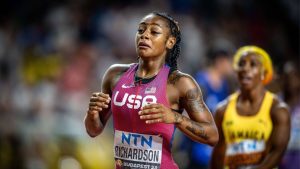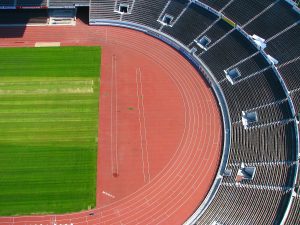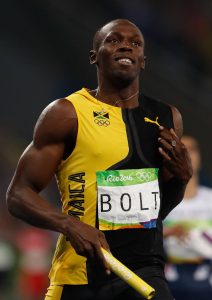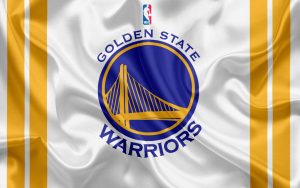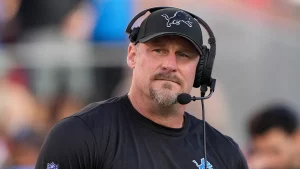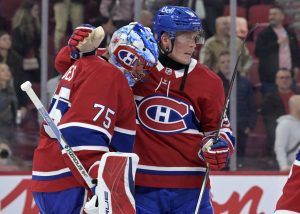
Essendon’s first recorded jumpers were navy blue (The Footballers, edited by Thomas Power, 1875) although the club wore ‘red and black caps and hose’. In 1877, The Footballers records the addition of ‘a red sash over left shoulder’. This is the first time a red sash as part of the club jumper, and by 1878 there are newspaper reports referring to Essendon players as ‘the men in the sash’.
Given that blue and navy blue were the most popular colours at the time, it is thought that Essendon adopted a red sash in 1877 to distinguish its players from others in similar-coloured jumpers.
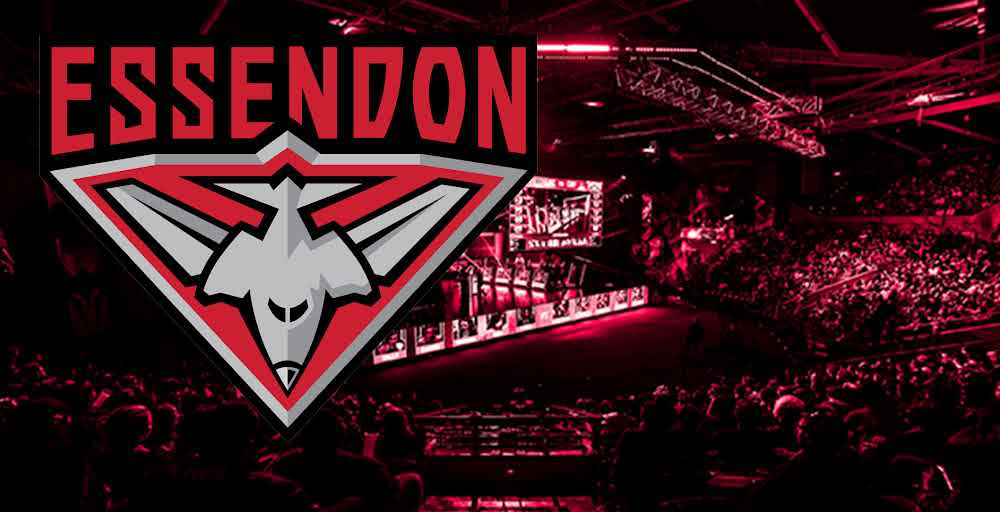
Clash jumpers[edit]
In 2007, the AFL Commission laid down the requirement that all clubs must produce an alternative jumper for use in matches where jumpers are considered to clash. From 2007 to 2011, the Essendon clash guernsey was the same design as its home guernsey, but with a substantially wider sash such that the guernsey was predominantly red rather than predominantly black. This was changed after 2011 when the AFL deemed that the wider sash did not provide sufficient contrast.[91]
From 2012 to 2016, Essendon’s clash guernsey was predominantly grey, with a red sash fimbriated in black; the grey field contained, in small print, the names of all Essendon premiership players.[91]
Before the 2016 season, Essendon’s changed their clash guernsey to a predominantly red one, featuring a red sash in black. Similar to the grey jumper, the names of Essendon premiership players were also printed outside the sash.[92]
Yellow armbands[edit]
Following Adam Ramanauskas’s personal battle with cancer, a “Clash for Cancer” match against Melbourne was launched in 2006. This was a joint venture between Essendon and the Cancer Council of Victoria to raise funds for the organisation.[93] Despite a formal request to the AFL being denied, players wore yellow armbands for the match, which resulted in the club being fined $20,000.[94] In 2007, the AFL agreed to allow yellow armbands to be incorporated into the left sleeve of the jumper.[95] The ‘Clash for Cancer’ match against Melbourne has become an annual event, repeated in subsequent seasons, though in 2012, 2013, 2014 and 2016, Hawthorn (twice), the Sydney Swans and Brisbane Lions were the opponents in those respective seasons instead of Melbourne.[96][97][98] In 2009, the jumpers were auctioned along with yellow boots worn by some players during the match.[99]
Club song[edit]
The club’s theme song, “See the Bombers Fly Up”, is thought to have been written c. 1959 by Kevin Andrews in the home of player Jeff Gamble at which time Kevin Andrews was living. The song is based on the tune of Johnnie Hamp’s 1929 song “(Keep Your) Sunny Side Up” at an increased tempo. Jeff Gamble came up with the line ‘See the bombers fly up, up’ while Kevin Andrews contributed all or most of the rest. At the time, “(Keep Your) Sunny Side Up” was the theme song for the popular Melbourne-based TV show on Channel 7 Sunnyside Up.[100] The official version of the song was recorded in 1972 by the Fable Singers and is still used today.[101]
The song, as with all other AFL clubs, is played prior to every match and at the conclusion of matches when the team is victorious.
- See the Bombers fly up, up!
- To win the premiership flag.
- Our boys who play this grand old game,
- Are always striving for glory and fame!
- See the Bombers fly up, up,
- The other teams they don’t fear;
- They all try their best,
- But they can’t get near,
- As the Bombers fly up!
Songwriter Mike Brady, of “Up There Cazaly” fame, penned an updated version of the song in 1999 complete with a new verse arrangement, but it was not well received. However, this version is occasionally played at club functions. In 2018, Andrews revealed that there was an error in the lyrics, in which in the line “The other teams they don’t fear”, the word “they” was supposed to be “we”.[102]
Logo and mascot[edit]
The club’s current logo was introduced in 1998,[103] making it the second oldest AFL logo currently in use, behind St. Kilda’s logo, which was introduced in 1995.
Their mascot is known as “Skeeta Reynolds”, and was named after Dick Reynolds. He is a mosquito and was created in honour of the team’s back-to-back premiership sides in the 1920s known as the “Mosquito Fleet”. He was first named through a competition run in the Bomber magazine with “Skeeta” being the winning entry. This was later changed to “Skeeta Reynolds”. He appears as a red mosquito in an Essendon jumper and wears a red and black scarf.
Headquarters, training and administration base[edit]
The Essendon Football Club primary training and administration base has been at The Hangar since 2013.[104] prior to this, the primary training and administration base of Essendon Football Club was based at Windy Hill Oval from 1922 until 2013.[105] prior to this, the home ground of Essendon Football Club was at the East Melbourne Cricket Ground from 1882 until 1921.
Essendon’s biggest rivals are Carlton, Richmond, and Collingwood, as these teams and Essendon are the four biggest and most supported clubs in Victoria. Matches between the clubs are often close regardless of form and ladder positions. If out of the race themselves, all four have the desire to deny the others a finals spot or a premiership. Essendon also has a fierce rivalry with Hawthorn, stemming from excessive on-field violence in the 1980s, perhaps reaching its zenith with the infamous Line in the Sand Match in 2004. Additionally, Essendon has a three-decade rivalry with the West Coast Eagles.
- Carlton – The rivalry between Essendon and Carlton is considered one of the strongest in the league. With the teams sharing the record of 16 premierships, both sides are keen to become outright leader, or if out of the finals race, at least ensure the other doesn’t. In recent years, the rivalry has thickened, with Carlton beating the 1999 Minor Premiers and premiership favourites by 1 point in the Preliminary Final. Other notable meetings between the two clubs include the 1908, 1947, 1949, 1962 and 1968 VFL Grand Finals and 1993 AFL Grand Final, with some decided by small margins.
- Collingwood – In the early days of the VFL, this rivalry grew out of several Grand Final meetings: 1901, 1902 and 1911. The teams didn’t meet again in a Grand Final until 1990 when Collingwood won to draw level with the Bombers on 14 premierships and deny the Bombers a chance to join Carlton with 15 flags. Since 1995, with the clubs facing off against each other annually in the Anzac Day clash, a match which is described as the second biggest of the season (behind only the Grand Final). Being possibly the two biggest football clubs in Victoria, regardless of their position on the ladder, this game always attracts a huge crowd, and it is a match both teams have a great desire to win regardless of either team’s season prospects. The rivalry thickened further in 2023 when Collingwood joined Essendon and Carlton with a record 16 premierships.
- Richmond – This rivalry stems out of the 1942 Grand Final which Essendon won. In 1974, a half-time brawl took place involving trainers, officials and players at Windy Hill and has become infamous as one of the biggest ever. The teams didn’t meet in the finals between 1944 and 1995, but there have been many close margins in home and away season matches as a result of each team’s “never say die” attitude and ability to come back from significant margins in the dying stages of matches. Having met in the AFL’s Rivalry Round in (2006 and 2009) and meeting in the Dreamtime at the ‘G match since 2005, the rivalry and passion between the clubs and supporters has re-ignited. In recent years the rivalry has been promoted as the “Clash of the Sash”.[106]
- Hawthorn – The two sides had a number of physical encounters in the mid-1980s when they were the top two sides of the competition. The rivalry was exacerbated when Dermott Brereton ran through Essendon’s three-quarter time huddle during a match in 1988 and again by an all in brawl during a match in 2004 allegedly instigated by Brereton (now known as the Line in the Sand Match after the direction allegedly given by Brereton for the Hawthorn players to make a physical stand). This was reminiscent of the 1980s when battles with Hawthorn were often hard and uncompromising affairs. During Round 22 of the 2009 season, Essendon and Hawthorn played for the last finals spot up for grabs. The teams played out an extremely physical game and despite being 22 points down at half time Essendon went on to win by 17 points. The game included a brawl shortly after half time sparked by Essendon’s captain Matthew Lloyd knocking out Hawthorn midfielder Brad Sewell, which led Hawthorn’s Campbell Brown to label Lloyd a ‘sniper’, and promised revenge if Lloyd played on in 2010.
- North Melbourne – One of the fiercest rivalries in the AFL can be traced back to 1896, when several clubs, including Essendon, broke away from the Victorian Football Association to form the Victorian Football League. North sought to join the breakaway competition, but some argue this desire was not realised due to Essendon feeling threatened by North’s proximity and the fact their inclusion could drain Essendon of vital talent. More than 100 years later, some North supporters have not forgiven Essendon for the decision and have blamed the Bombers for their small supporter base and gate revenue. North were finally admitted into the VFL in 1925 alongside Footscray and Hawthorn. In 1950, the two sides met in their first and only grand final meeting to date, which Essendon won by 38 points. The rivalry would flare up again in the 1980s. In 1982, the Krakouer brothers, Jim and Phil, led the Roos to an Elimination Final win. Essendon had their revenge a year later, winning a Preliminary Final by 86 points. The rivalry was re-ignited in the late 1990s and early 2000s due to the on-field success of the two sides. In preparation for the 1998 finals series, and despite losing six of their last eight to the Roos, legendary Essendon coach Kevin Sheedy publicly labelled North executives Greg Miller and Mark Dawson soft in response to comments from commentators that his Essendon team was soft. The Kangaroos beat Essendon in the much-hyped encounter that followed (a Qualifying Final), and North fans pelted Sheedy with marshmallows as he left the ground, although Sheedy was seemingly unfazed by the incident, encouraging a “Marshmallow Game” the next year and relishing in the fact that Sheedy’s ulterior motive was to build up the game and draw a large crowd, which proved to be correct, drawing in 71,154 people to attend the game.[107][108] In 2000, the Bombers thrashed North by 125 points. The biggest VFL/AFL comeback of all time occurred between the two teams when Essendon managed to come back from a 69-point deficit to win by 12 points in 2001. A meeting of the two rivals at the MCG in the 2014 AFL finals series in the 2nd Elimination Final resulted in North winning by 12 points.
- West Coast – A three-decade rivalry between the Essendon Bombers and the West Coast Eagles kicked off when Essendon coach Kevin Sheedy tied the windsock down on the School End outer terrace so the opposition would not know which way the wind was blowing. Sheedy later said of the incident three decades later, in jest, that it was because the brand sponsor had neglected to pay their account. When West Coast won the toss and kicked against the breeze, it looked as if Sheedy’s plan had worked. Nevertheless, West Coast would go on to win by 7 points.[109] In his excitement at winning a close match in Round 16, 1993, with ruckman and forward Paul Salmon kicking a goal 30 seconds before the final siren against the West Coast Eagles (the reigning premiers), Sheedy waved his jacket in the air as he came rushing from the coaches’ box. To this day, the supporters of the winning club wave their jackets in the air after the game when the two teams play.[110] The moment is captured in Jamie Cooper’s painting the Game That Made Australia, commissioned by the AFL in 2008 to celebrate the 150th anniversary of the sport, with Sheedy shown waving a red, black and yellow jacket rather than a red and black jacket, to reflect Sheedy’s support of indigenous footballers.[111] The Bombers would go on to defeat West Coast again later that year in their semi-final clash and take home the 1993 premiership cup a couple of weeks later. Despite Sheedy’s typically measured disposition, Sheedy did lose his cool on one occasion in 2000. In yet another game against the Eagles, Sheedy was fined $7,500 by the tribunal after making a cut-throat gesture to then-Eagle Mitchell White during the half-time break of the Essendon–West Coast clash in Round 15, 2000, also apparently mouthing the words “You… are… fucked!” to White.[112][113][114] In a famous game in 2004, with 35 seconds remaining and the scores deadlocked at 131 points apiece, Essendon legend James Hird swooped on a loose ball in the right forward
 pocket and snapped a match-winning goal with his 15th possession for the quarter, famously hugging an Essendon supporter in the crowd in a moment of jubilation after being fined $20,000 earlier in the week for criticising umpire Scott McLaren.[115][116][117] Full-forward Matthew Lloyd also kicked eight goals during the game to net three Brownlow votes.[118] Despite Hird’s incredible individual effort, and to the consternation of fans and the audience of the 2004 Brownlow medal count, he did not receive any Brownlow Medal votes from the umpires for his 34 disposals and clutch goals, which some have speculated was in retribution for his tirade against umpire McLaren.[119]
pocket and snapped a match-winning goal with his 15th possession for the quarter, famously hugging an Essendon supporter in the crowd in a moment of jubilation after being fined $20,000 earlier in the week for criticising umpire Scott McLaren.[115][116][117] Full-forward Matthew Lloyd also kicked eight goals during the game to net three Brownlow votes.[118] Despite Hird’s incredible individual effort, and to the consternation of fans and the audience of the 2004 Brownlow medal count, he did not receive any Brownlow Medal votes from the umpires for his 34 disposals and clutch goals, which some have speculated was in retribution for his tirade against umpire McLaren.[119]


